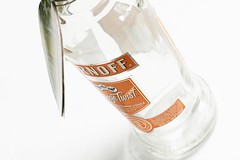Battery Care
My Canon battery pack (BP511A) died on me recently at a rather critical moment. It now charges from 0% to 100% in less than an hour, and goes dry in less than 30 shots. This left me quite perplexed, considering I had been quite careful with the way I handled the battery pack: no extremes of temperature or humidity, never been jarred or charged using the a third-party charger.
Spadix introduced me to the concept of storing with 40% charge and pointed me to the excellent Battery University website.
Storing modern Li-ion batteries at near-zero charge is risky because they apparently contain a critical life-support circuit which may drain the last mC. Once this happens, it's death with no possibility of resuscitation.
At the other extreme, Battery University discourages users from storing Li-ion packs with a full charge. The optimum is 40% charge, a level which is conveniently indicated by one of the LED patterns on the charger.
It doesn't seem like a good idea to waste precious shutter cycles on a camera to discharge the battery to safe levels before a period of hibernation. Discharging by shorting or via a resistor seems positively risky.
So then, happily, the only safe course of action that comes to mind is to keep shooting.


1 Comments:
Indeed!
This is a very novel way to think about it, though. Keep shooting until after your indicator shows you 2 bars out of 4 or something. And then switch to a recently fully-charged spare.
I think I'll use this strategy from now. I would say it's more accurate than my current one of running down a battery and then charging it for around one hour (regular charge time for my equipment is around 2:20 hours I think). The problem with this is the assumption that charge levels increase linearly with time. I'm pretty sure that's not the case. I'll do some research into this area and let you know what I find out. I would also hazard a guess that this particular relationship (charge level vs. time charged) would be different for different batteries.
Post a Comment
<< Home